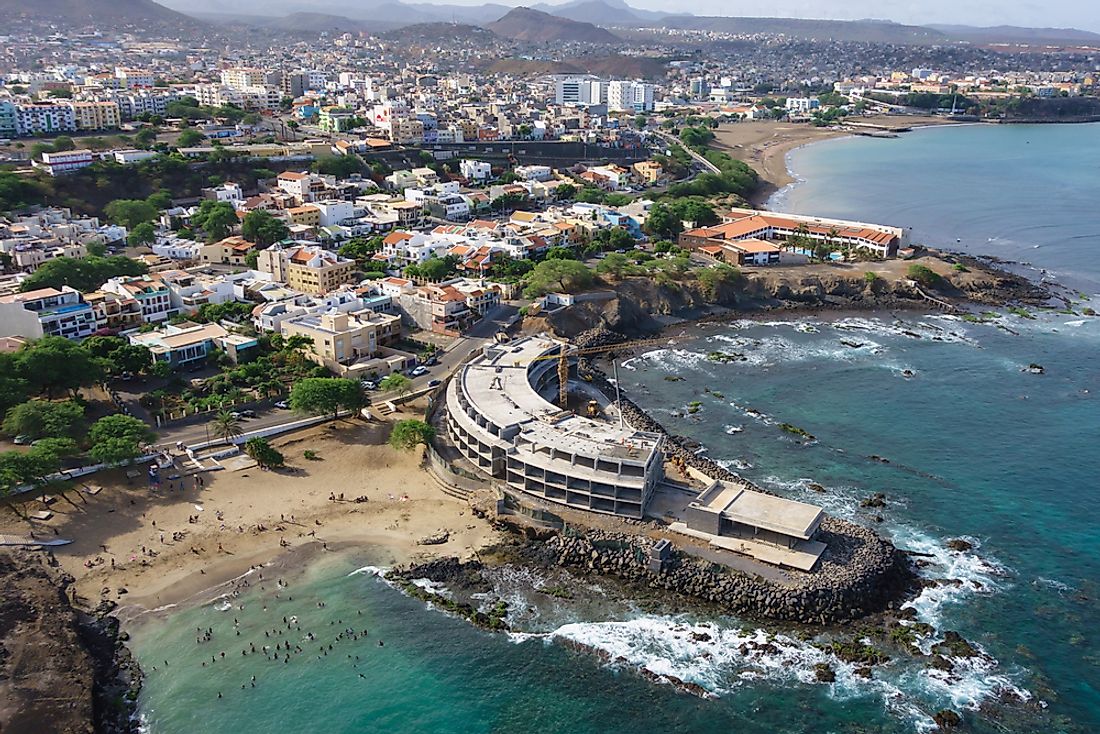What Is the Capital of Cape Verde?

The capital and largest city of Cape Verde is Praia. The name Praia or Praya means beach in both Cape Verdean Creole and Portuguese. Praia is built on the southern coastline of the Island of Santiago. Its history dates back to 1460 when Santiago Island was discovered by an Italian navigator and noble man named Antonio da Noli. Praia attained the status of a town in 1615, and in 1770, it became the nation's capital after the former capital - Ribeira Grande - was rendered insecure due to pirate attacks. In 1858, Praia became a city through an official decree, and it retained its status as the capital. The city also serves as the seat of Praia Municipality.
Geography
The city occupies 39.6 square miles of area. It sits on the southern shore of Santiago Island, approximately 405 miles west of Dakar, Senegal. Praia lies on a series of volcanic plateaus and their surrounding valleys, and its urban settlement areas are mainly established along the valleys and on top of the plateaus. The city center, which is built on a small plateau, is called Platô. Due to the city's arid climate, Praia is not very biodiverse. However, the waters surrounding the city are home to a variety of fish species including red grouper and mullet. Species like the Diplodus prayensis are endemic to the coast of Praia and a few other parts of Santiago Island. Birds species like the lago sparrow and the Cape Verde warbler can also be seen around the city.
Demographics
When the first settlement was established in the Praia area, majority of its inhabitants were slaves. Today, the city has a diverse population comprising of the natives of the country as well as immigrants from other nations. According to a 2013 census report, Praia is inhabited by approximately 138,782 people, constituting around 25% of the country's population. These residents live in several neighborhoods in the city. Christianity is the dominant religion in Praia, with more than 85% of the residents being Roman Catholics.
Economy
Praia is not only the capital of Cape Verde but its economic hub as well. Its gross metropolitan product is approximately 39% of the nation's GDP. The city's economy depends on the services, industrial, and commerce sectors. Praia has a thriving fishing industry located on its coast. The city has a large port from which the nation's exports of sugarcane, coffee, and tropical fruits are shipped. Supplies such as foodstuffs also enter the country through the harbor. Praia has several attractions and pleasant weather all year round, making it a popular destination for tourists from around the world.
Climate
The climate of Praia is a mild desert climate, designated as BWh in the Koppen classification. It experiences a very pronounced and lengthy dry season followed by a short wet season. The city receives an average of 260 millimeters of rainfall annually, primarily between August and October, and it does not have any rainy days between February and June. Praia does not experience extremely hot or cold temperatures like other arid regions because of its oceanside location. Temperatures are always warm throughout the year, with the mean temperature ranging between 23 °C and 27 °C. Praia's temperature patterns are similar to those of tropical climates, but its precipitation is less than that received in tropical climate zones.











